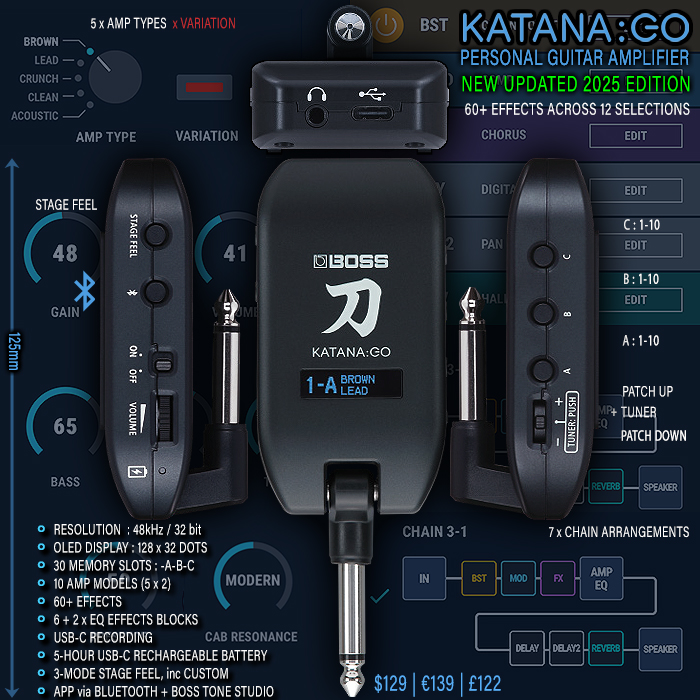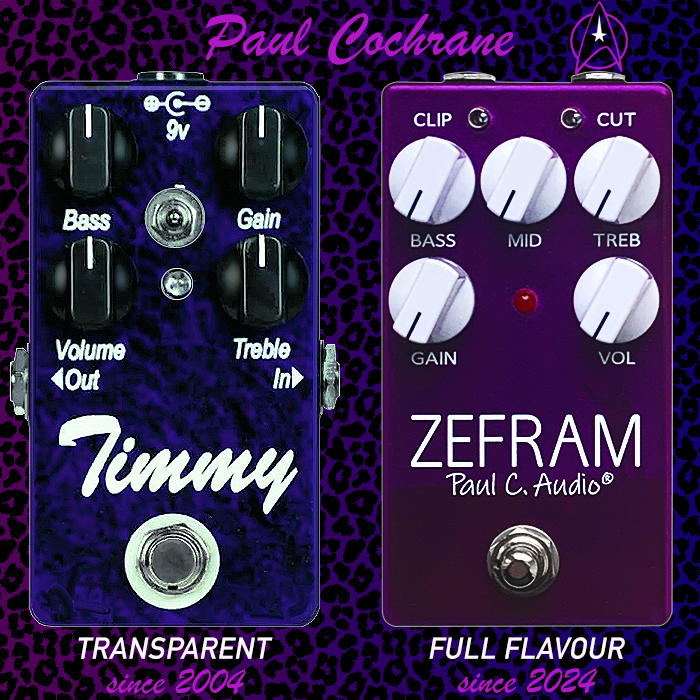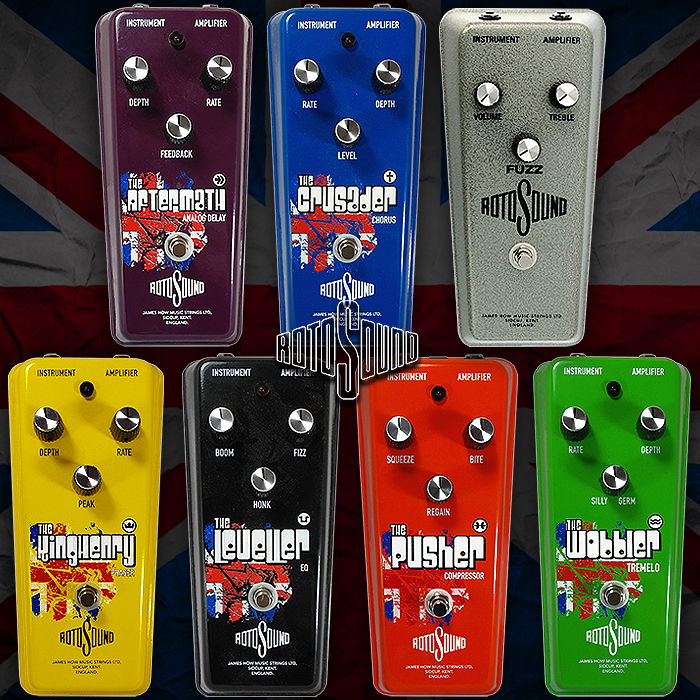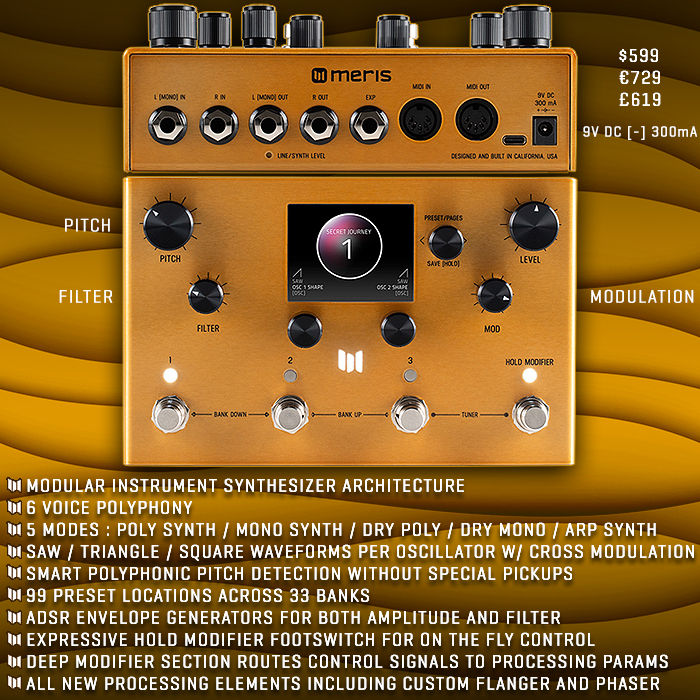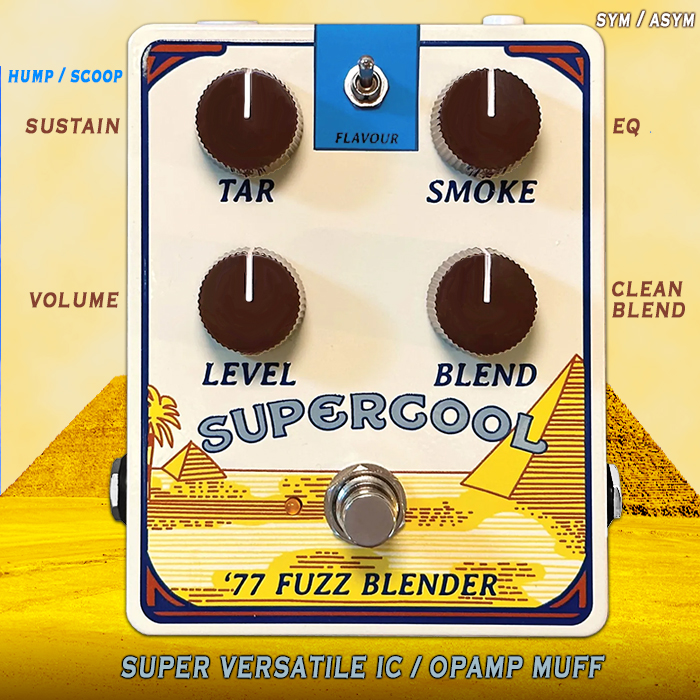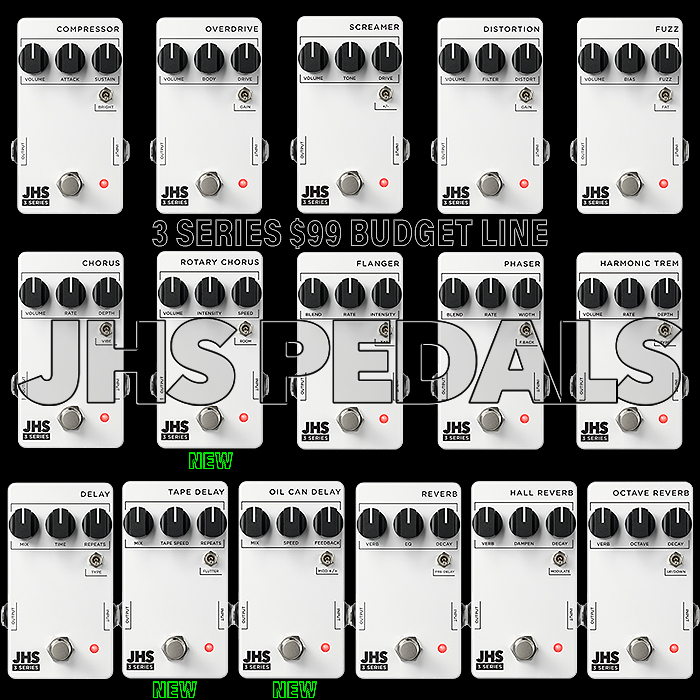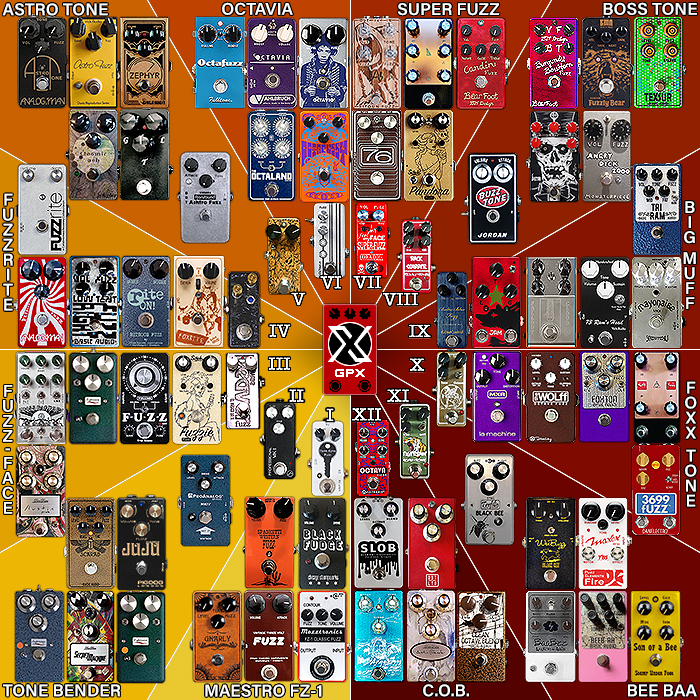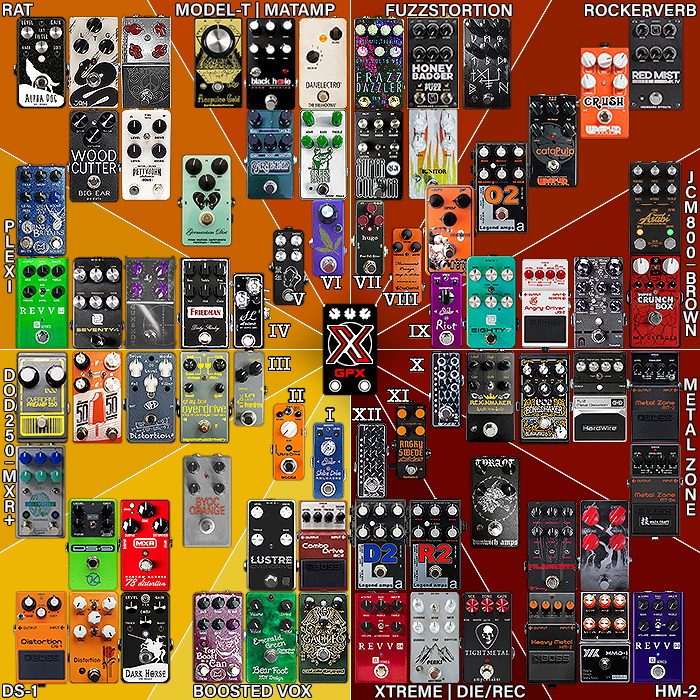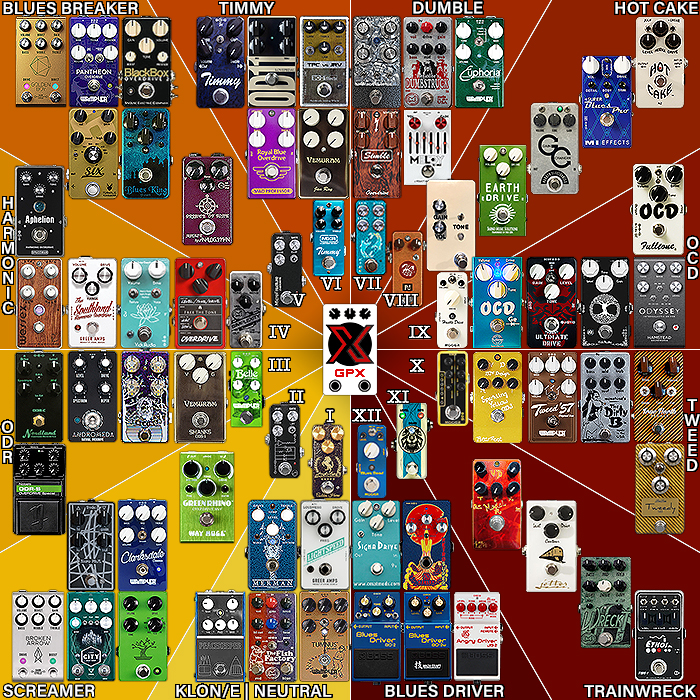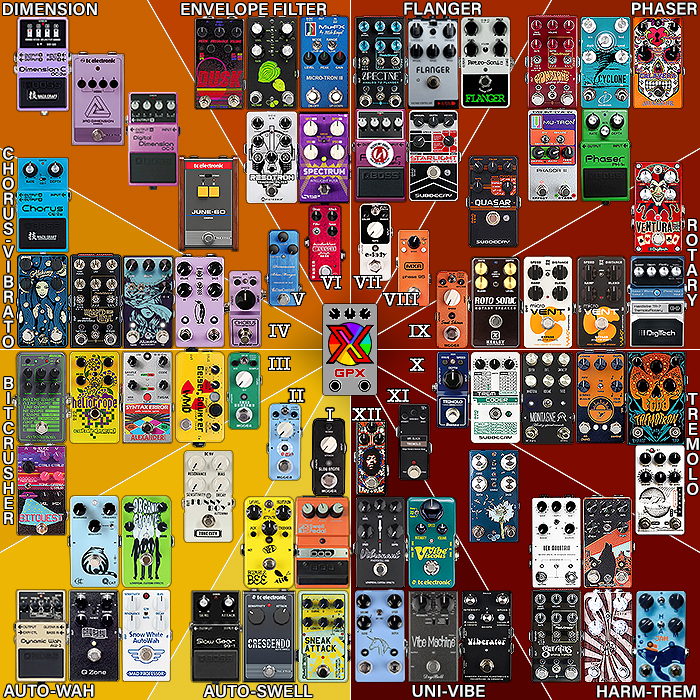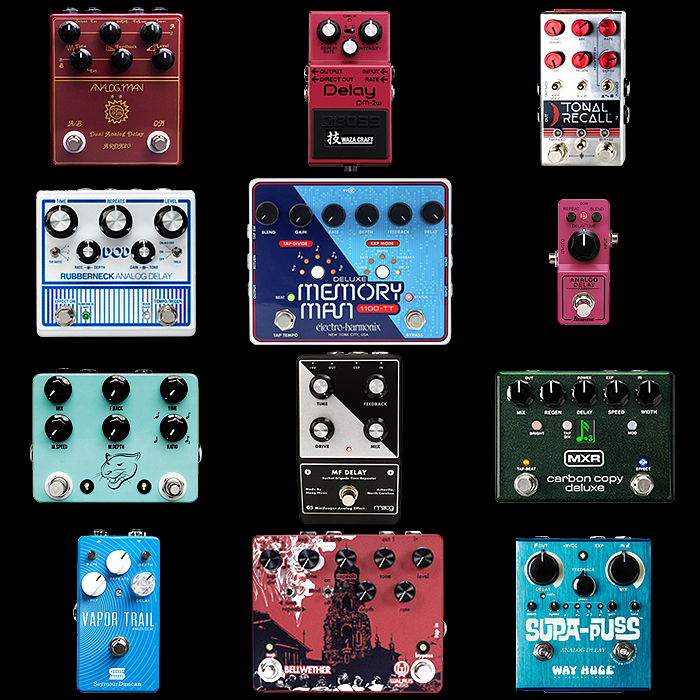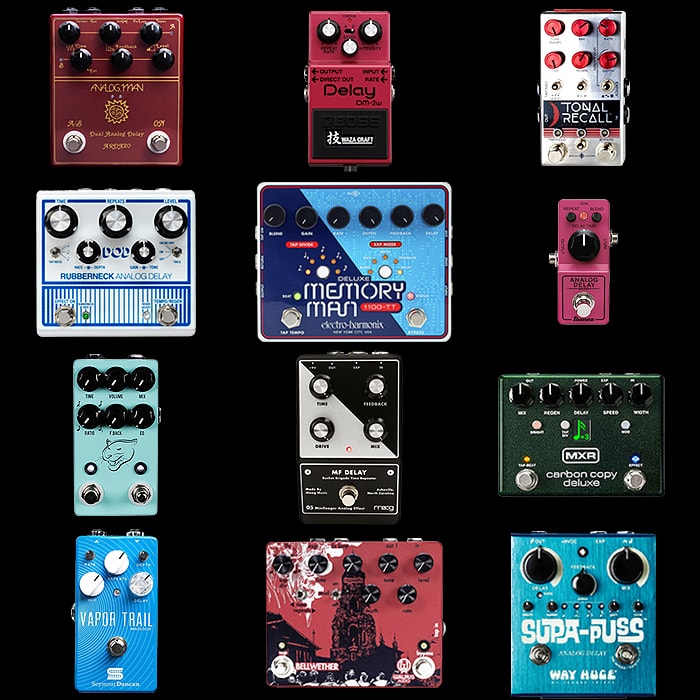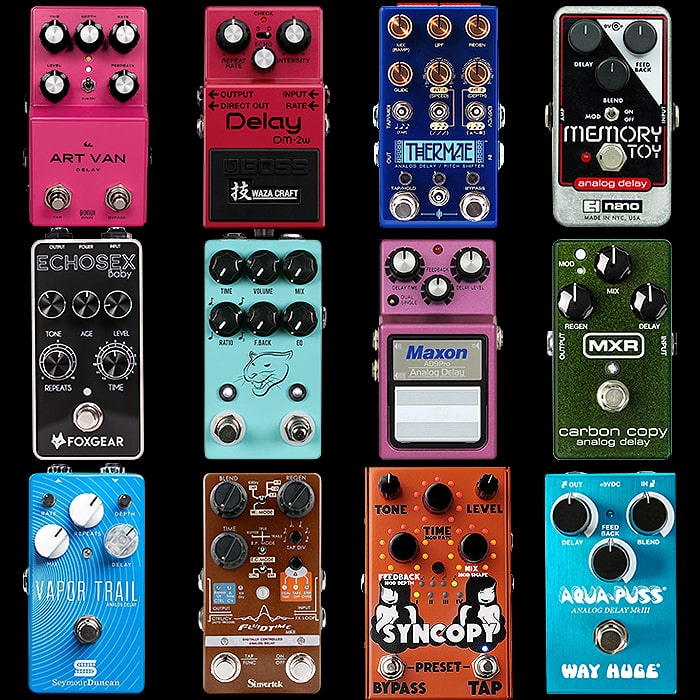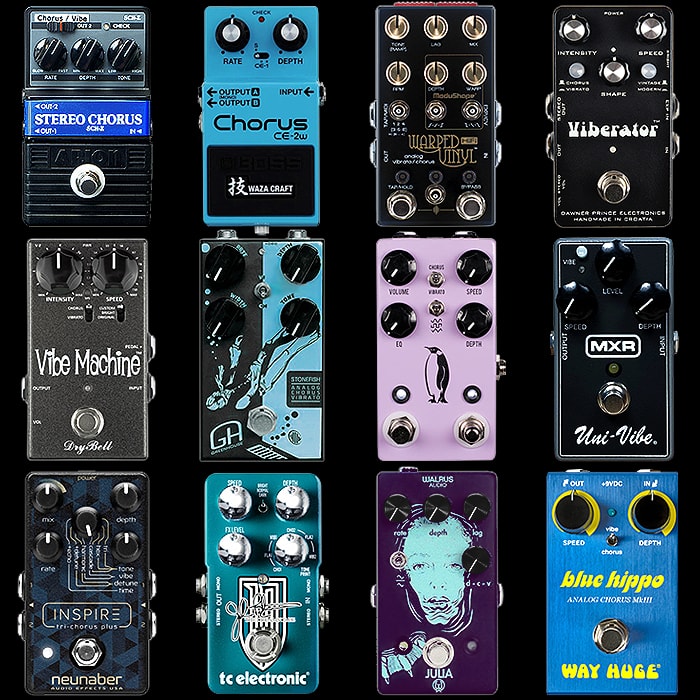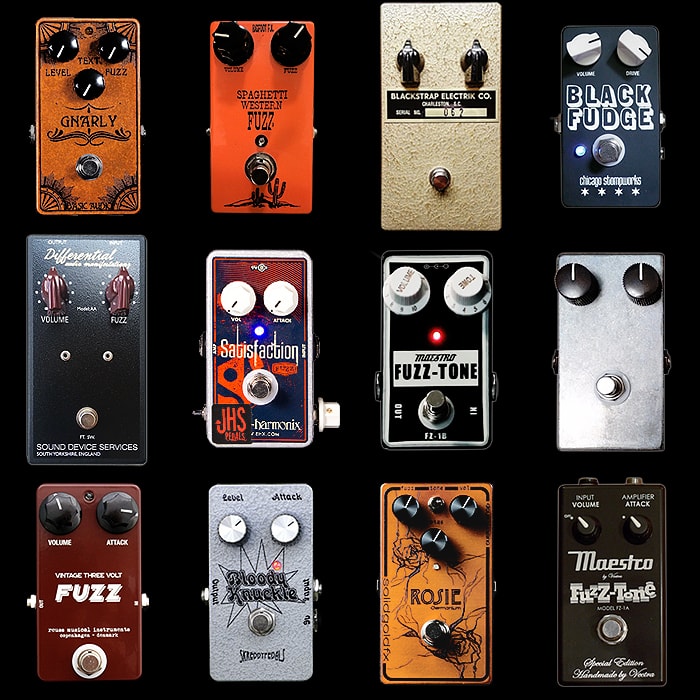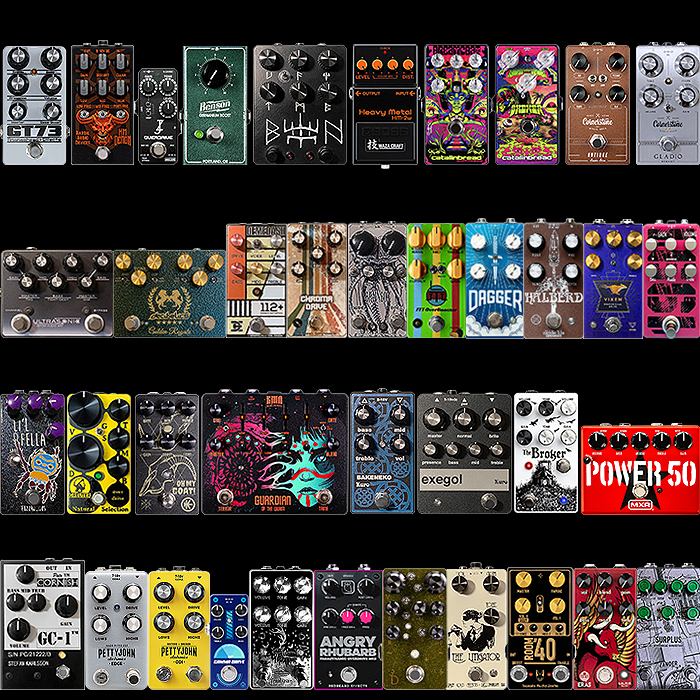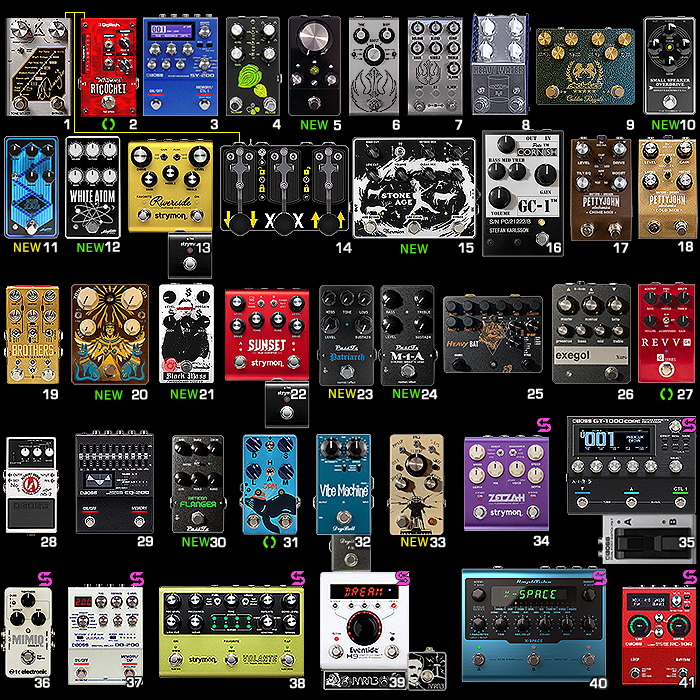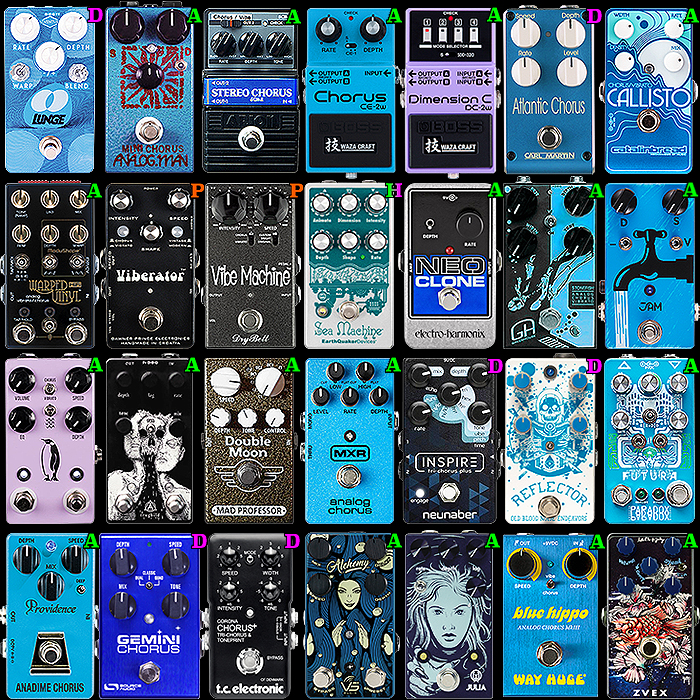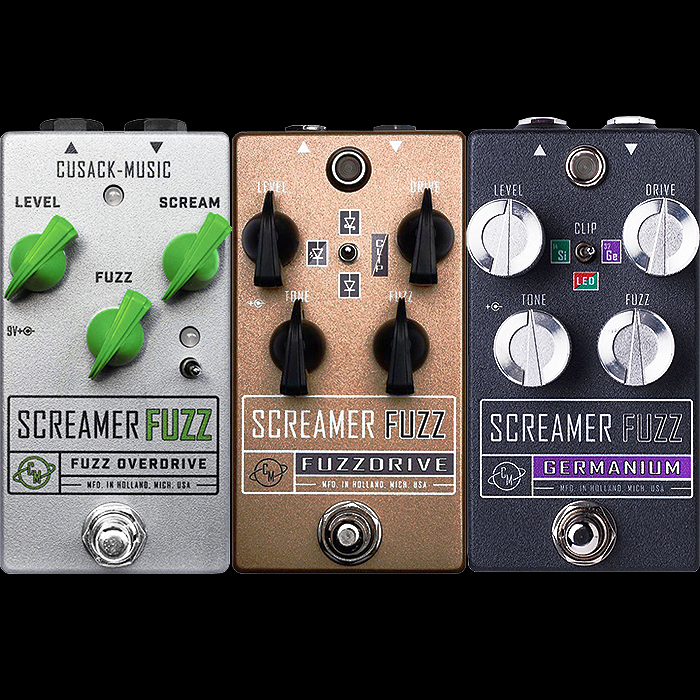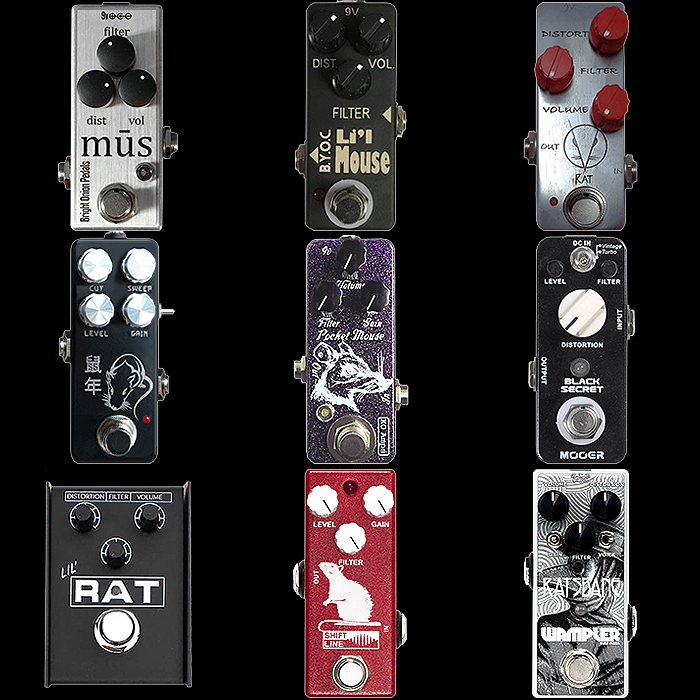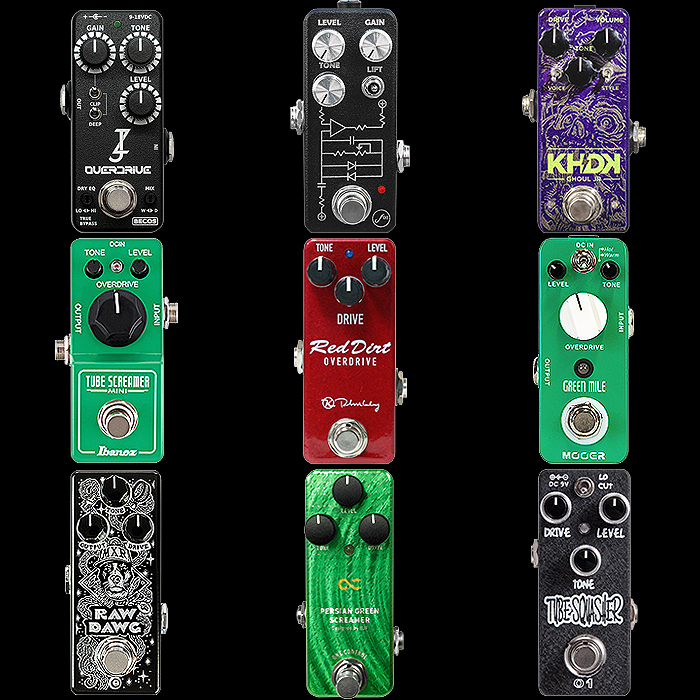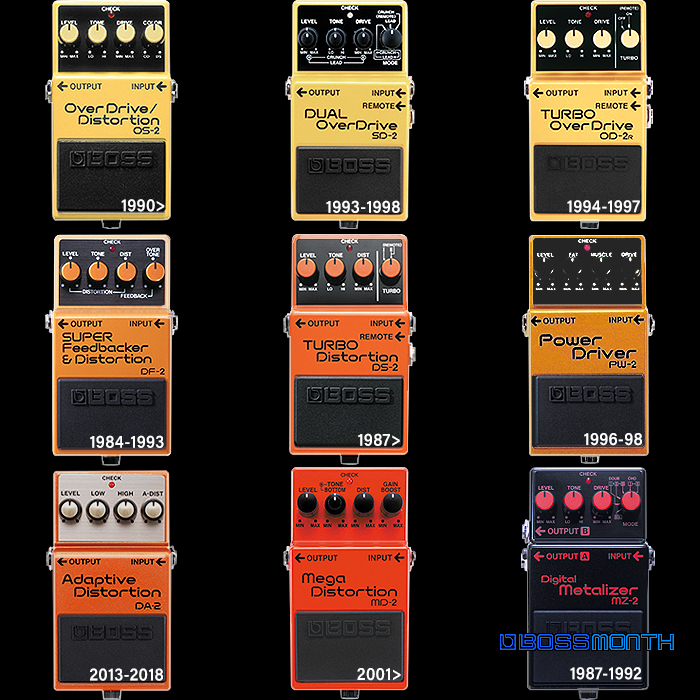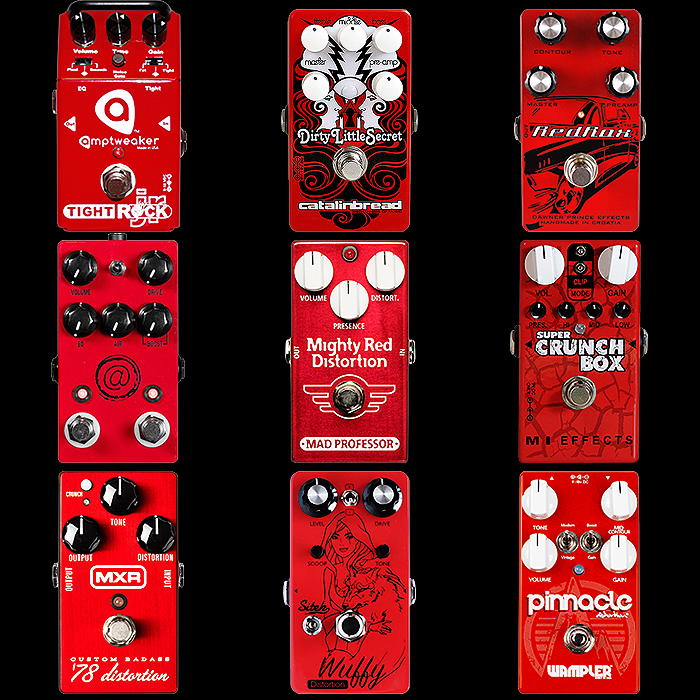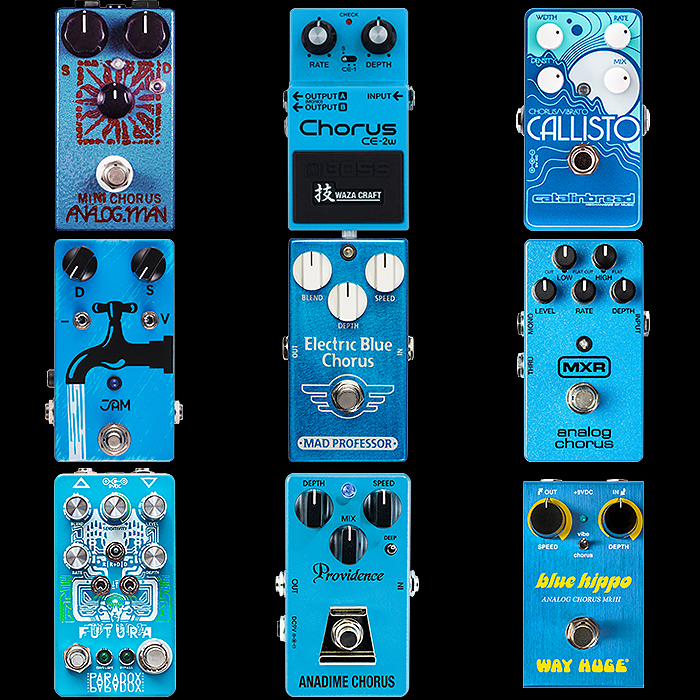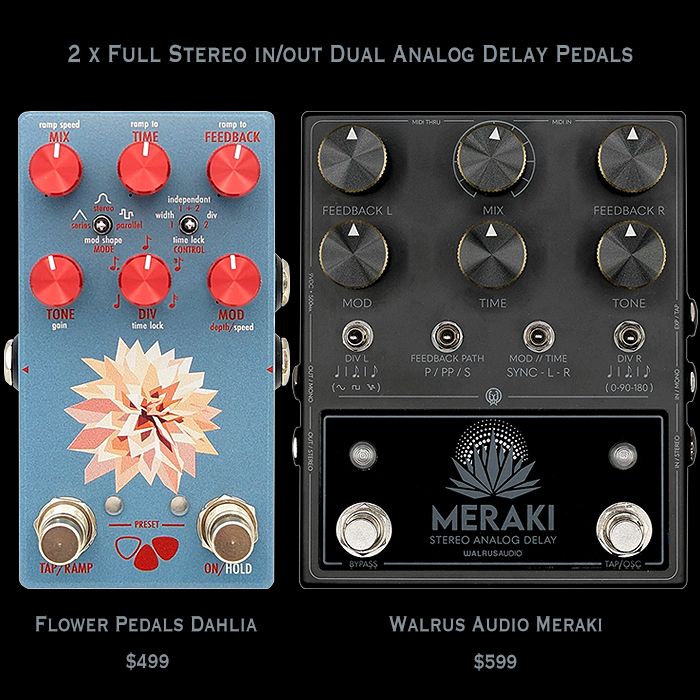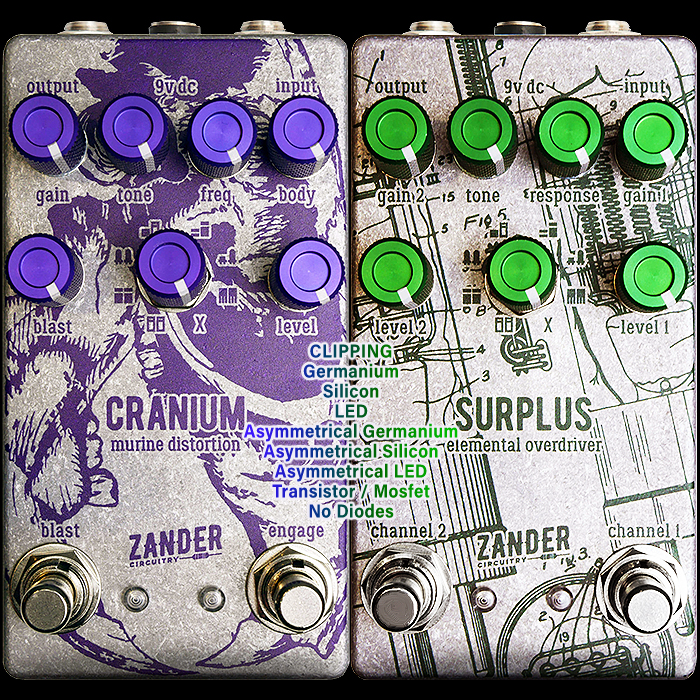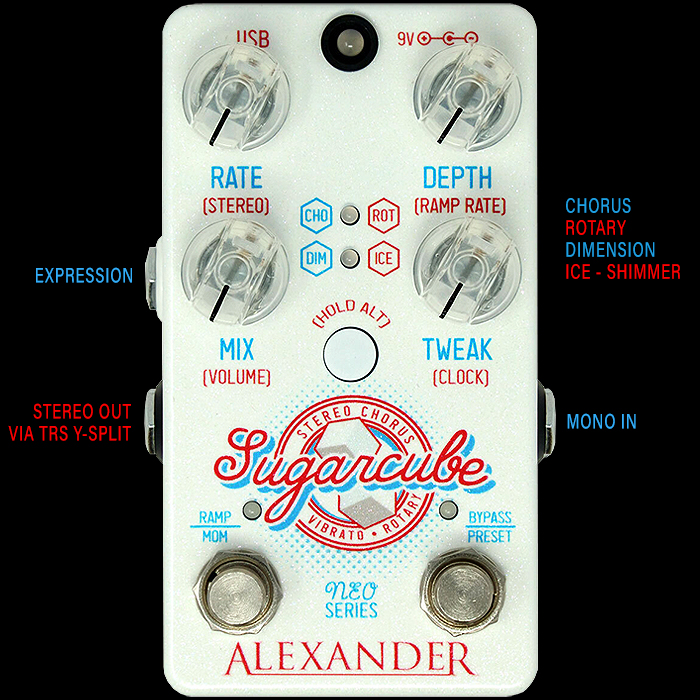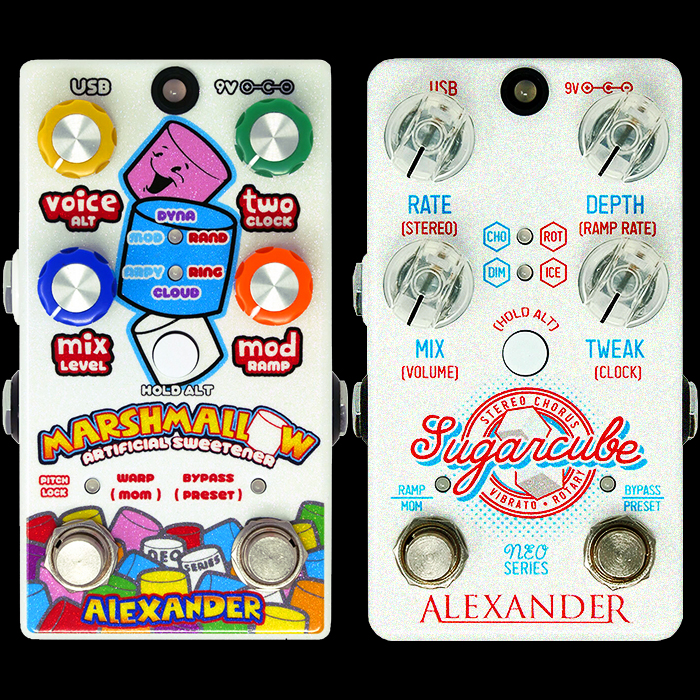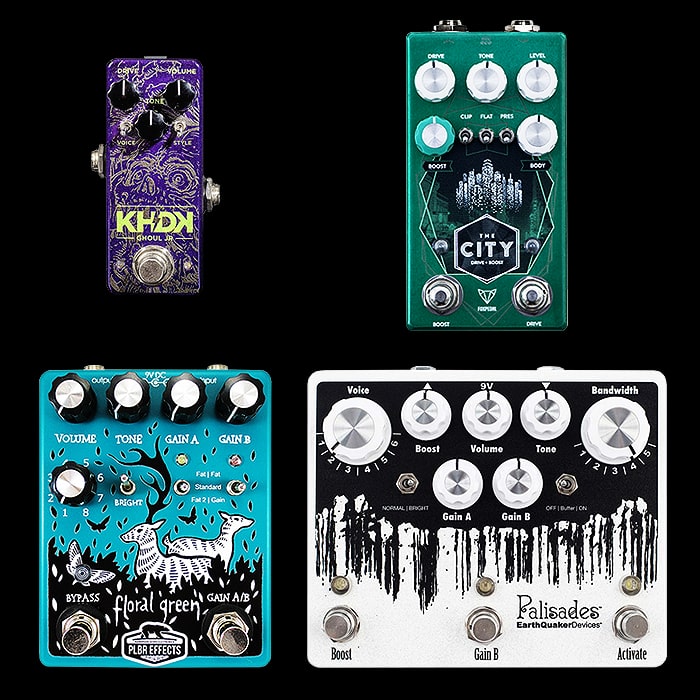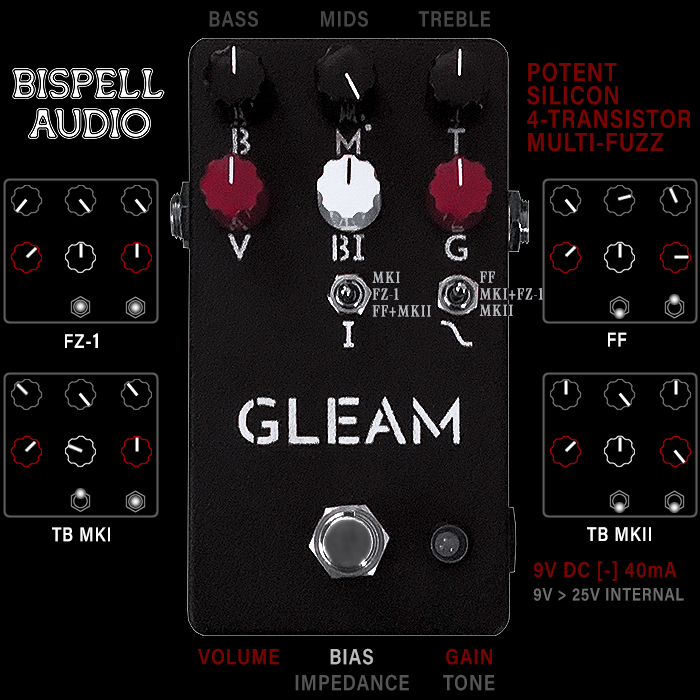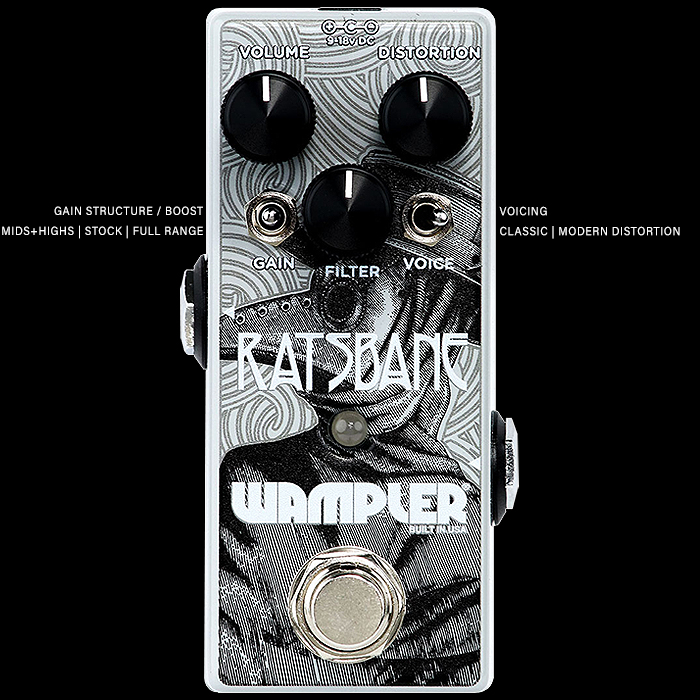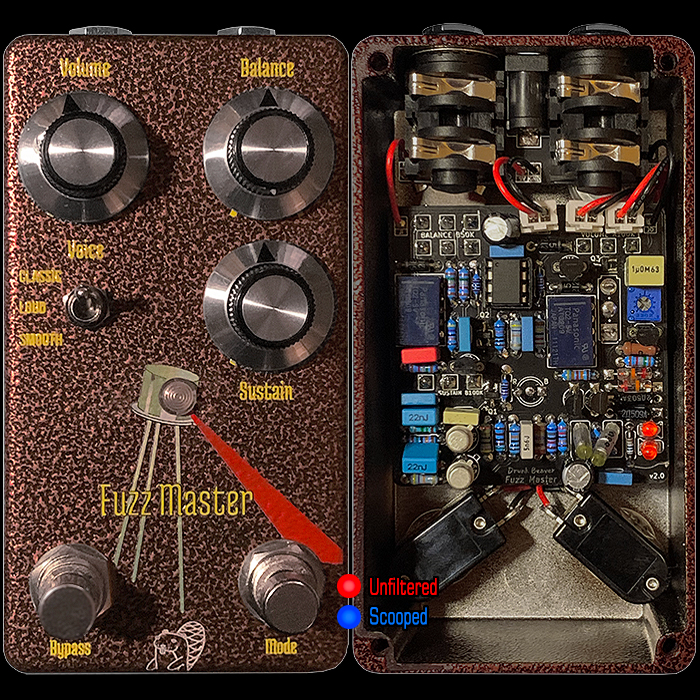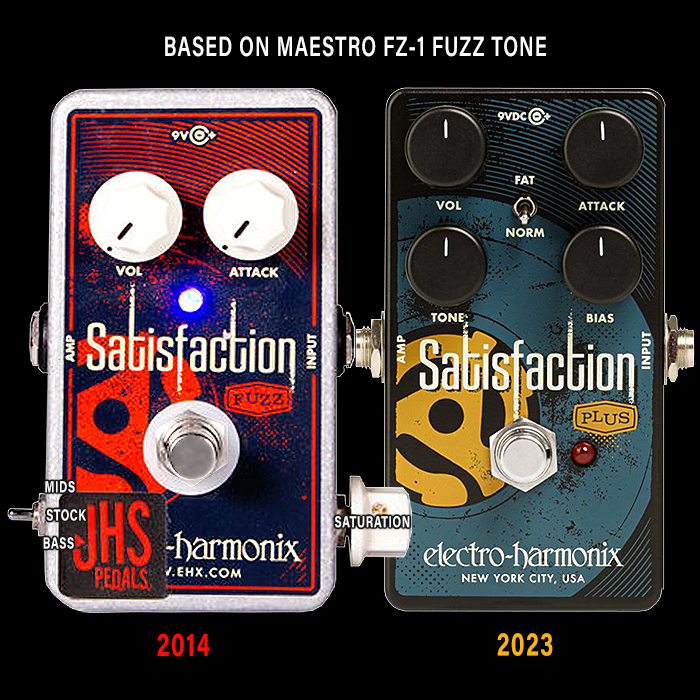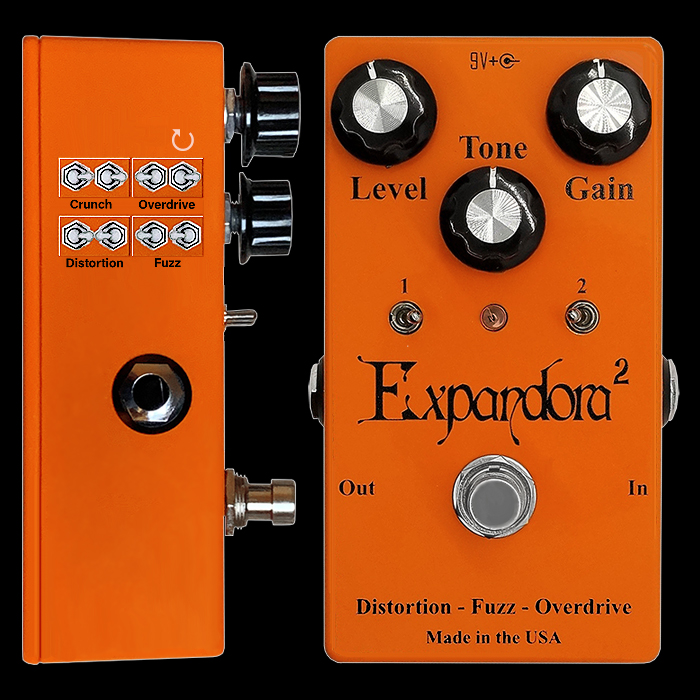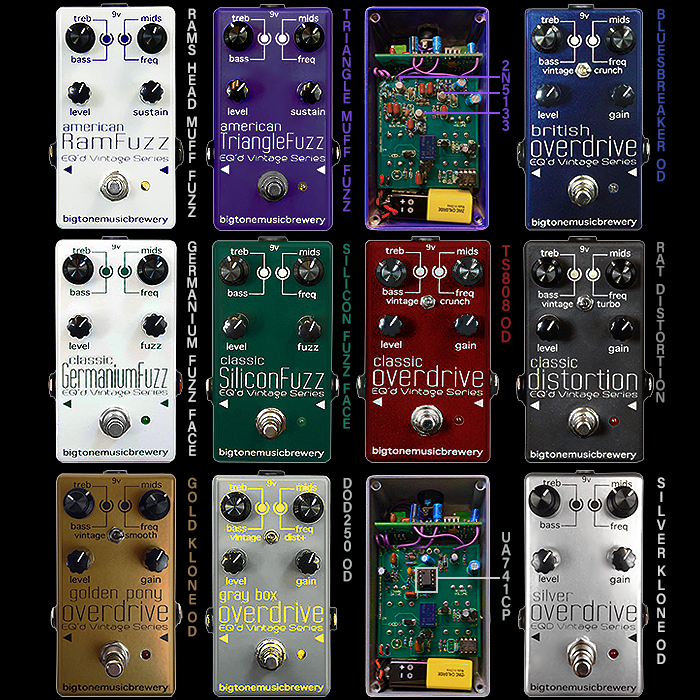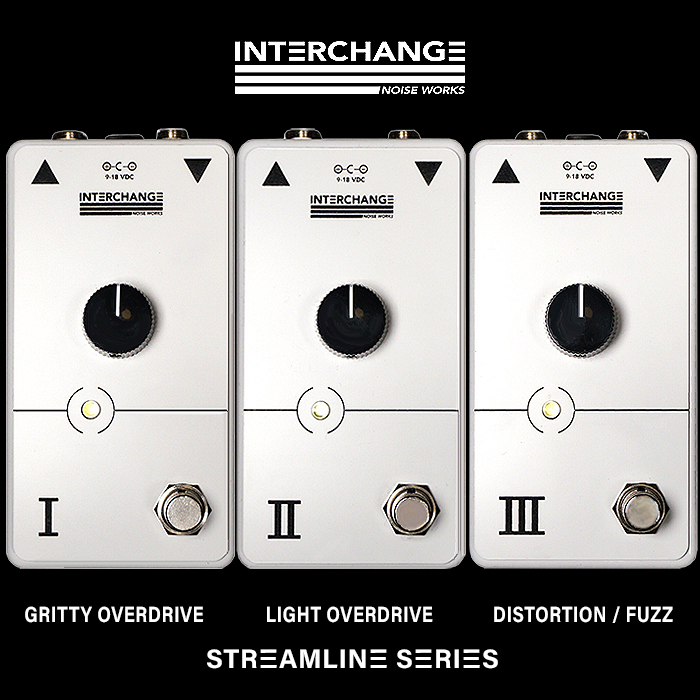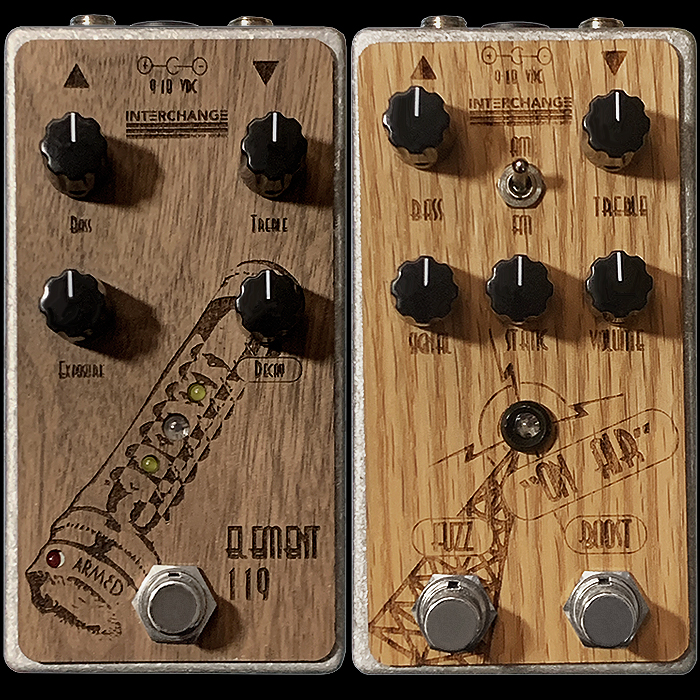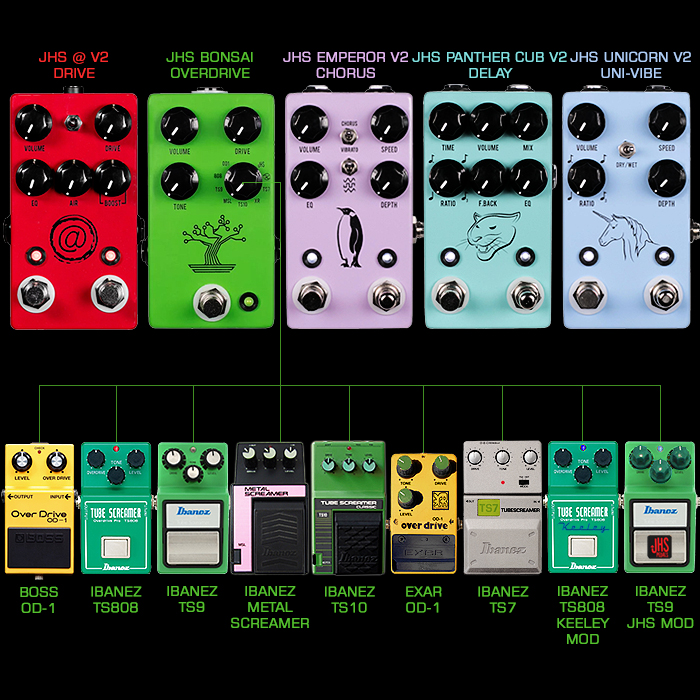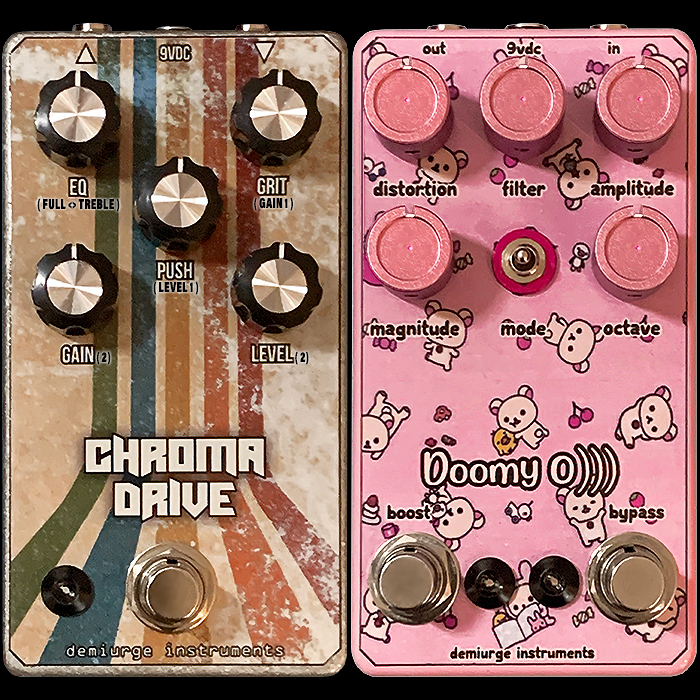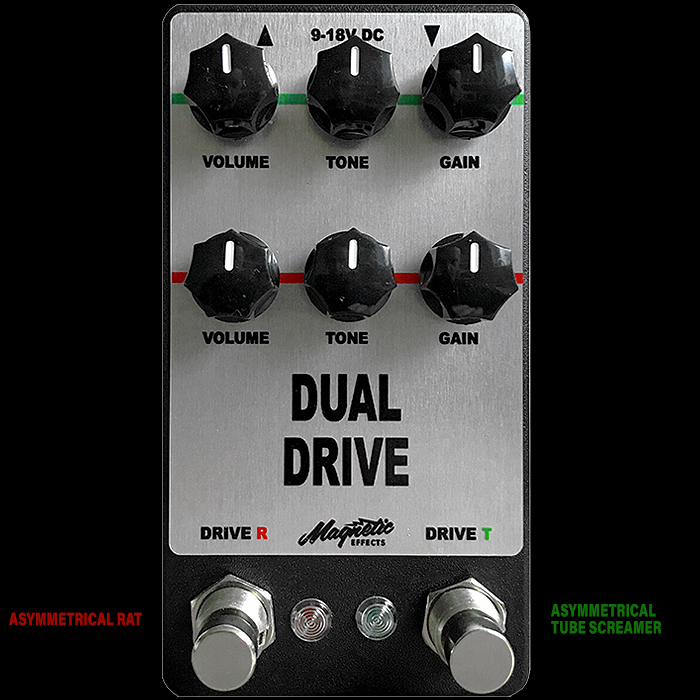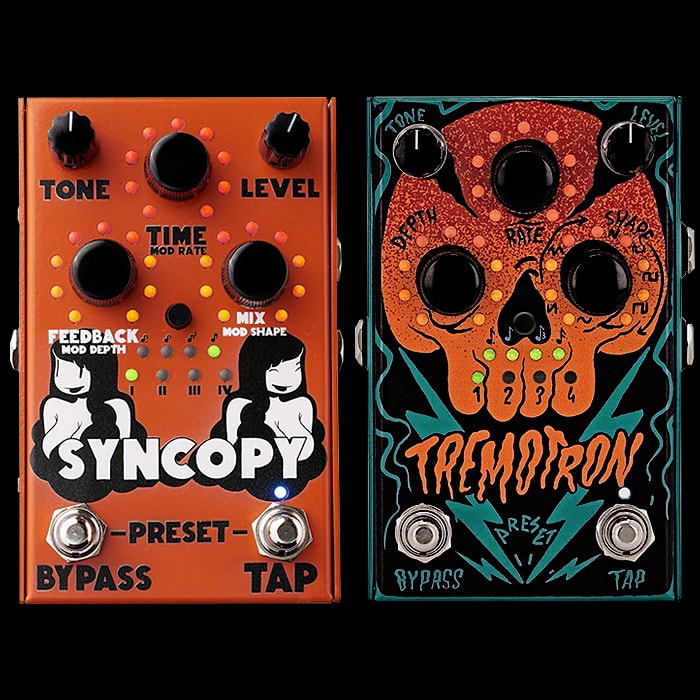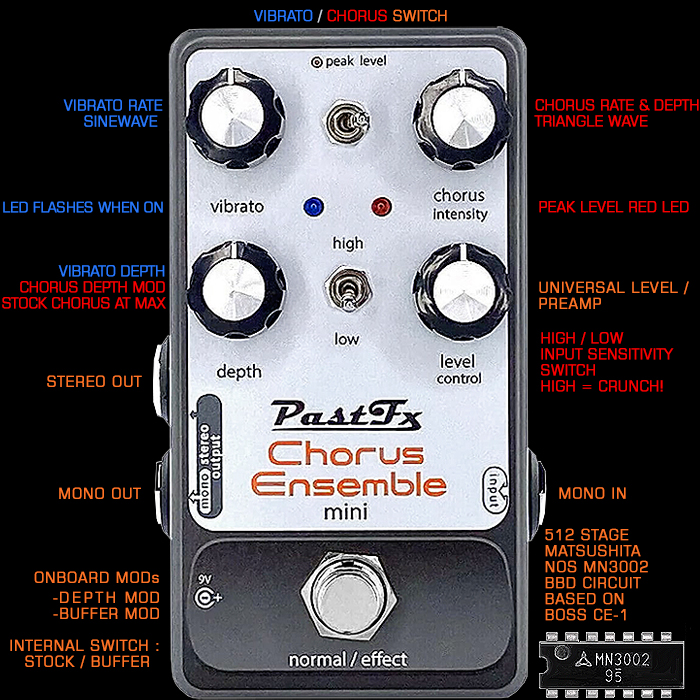Gibson Revives, Modernises, and Extends its range of Maestro Analog Stompboxes
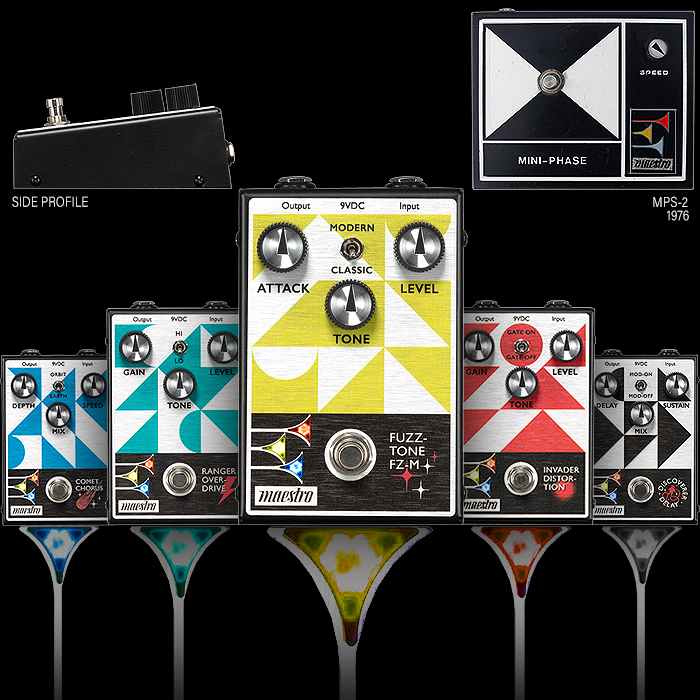
Gibson famously invented the Guitar Effects Pedal / Stompbox when it released its Germanium Transistor Maestro FZ-1 Fuzz-Tone back in 1962 - and as famously featured on the Rolling Stones’ ’Satisfaction’. Over the span of that sub-brand’s initial run we witnessed the creation of the BG-1 Boomerang Wah, RM-1 Ring Modulator, PS-1 Phase Shifter and EP-3 Echoplex Delay. Which all remain iconic effects to this day.
For its revival Original Collection - Gibson has taken significant visual cues from its 1970’s line - and say the MPS-2 Mini-Phase in particular - which obviously inspired the Orla Kiely-like geometric patterns, knob shape and Tri-Colour Bugles motif - as well as providing the template for the ’boxed-in’ Maestro logo.
The new boxes are all mid-size wedges with top mounted jacks - three knobs and an alternative voicing toggle-switch. The enclosures are an interesting mix of vibrant brushed and anodised aluminium facias on top of black bodies. The tri-colour Bugle LEDs are especially cool. While I feel that there is a little too much graphically going on - which would somewhat indicate design by committee rather than a singular individual designer. The motifs to the right of the footswitch in particular are a little muddled and inconsistent - they kind of mess up the design and make it look too crowded and fussy. If you are going to use secondary symbols too - why not colour-coordinate them with the main facia geometry. And finally why the need to box in the logo? - where previous versions of Maestro had the logo nicely just inverted in white - far more elegant. So there are some nice design touches here, but also some over-seasoning. Also - these pedals would be much cooler in more compact enclosures - for sure maintain the wedge shape - but bring those sides in!
The output sounds pretty decent - and I really enjoyed Captain Lee and Pete Honoré’s reveal of these pedals as below - but I’m not sure any of these are particularly essential - even the Fuzz-Tone FZ-M. They certainly mostly look good - and are well priced at around $150 / €150 / £140 each (Delay is $€£10 more). And they are not as unergonomic as Josh Scott’s Legends of Fuzz line - but a somewhat similar exercise really.
For me the 3 most famous Maestro effects are the FZ-1, PS-1 and EP-3, while two of those essentially are missing from this original line-up. I often question whether this is genuine fan service or more of cash-grab? I'm not ruling out any of these yet - as Pete was able to get some pretty decent tones out of each of them - and had a lot of fun with the Delay in particular - which is a very decent Analog Delay. There are however many more exciting and more full-featured alternatives at more practical sizes so not sure how significant a take-up there will be here. The pattern nowadays is generally to be able to squeeze as many flavours onto your pedalboard as possible - and these slightly over-sized boxes make that tricky!
Here follow the usual details - I would be very happy to hear what your own take is on this selection too. I'm both impressed and slightly underwhelmed at the same time! :
Fuzz-Tone FZ-M - $149 / €149 / £139
Controls - Attack, Voicing : Modern / Classic, Level, Tone.
This is the most obvious candidate for reissue - while of course it looks nothing like its original inspiration - more of a modern evolution really - but actually sounds pretty decent. This is the one I'm personally most likely to pick up if any - while I will probably pick up the neater and slightly more versatile Fuzz-Master from Drunk Beaver Effects first - just waiting for Vitalii to improve the graphics on that. In any case there are plenty of really decent compact replicas out there that are just as worthy. Would be cool to know which transistors Gibson used here - there's certainly no mention of Germanium Transistors, I would rather assume some of those tiny Silicon SMT type devices - I'm presuming these are very much SMT design pedals - which is an even better reason for these to be in more compact enclosures! Most likely a very similar production to Josh Scott's / JHS's Legends of Fuzz Series.
Ranger Tube-Amp Inspired Overdrive - $149 / €149 / £139
Controls - Gain, Voicing : Hi / Lo, Level, Tone.
A nominative tube-amp inspired overdrive (TS808 variant?) with Hi and Lo gain options - and where the latter is more into Boost territory really. It sounds OK - but there don't seem to be any magical diodes evident - there's certainly no shortage of brilliant overdrive pedals out there already - so not sure this will cut any sort of swathe. It's fine really - just not particularly essential - and I'm not sure it does enough to challenge any of the existing overdrive champions... you can get the EQD Plumes for a third less for instance!
Invader Modern Distortion - $149 / €149 / £139
Controls - Gain, Gate : Off / On, Level, Tone.
Actually a little bit of a surprise - a pretty modern and fairly full-on distortion - which will do a decent chug with the Gate engaged. Distortions are most typically divided into either Vintage - slightly scooped and saggy, or Modern - tighter and punchier - and it's interesting that Gibson has gone with a more modern variety here for essentially a revival of vintage effects! Distortions tend to be typically Marshall or Rat inspired - while this is neither of those, and I'm not entirely sure what Gibson based this one on.it's decent but nowhere near upper echelon - as it doesn't have those beautifully complex saturating harmonics that the best examples have, while it's sustain is very decent. There are parts of this I quite like - but the format is not entirely right - and I have far more capable distortions available to me in far more practical formats.
Comet Analog BBD Chorus - $149 / €149 / £139
Controls - Depth, Voicing : Orbit / Earth, Speed, Mix.
I feel that every BBD Chorus should state which chipset it uses - so you can ascertain which classic chorus it is inspired by. Gibson is very scant on details for any of these - simply trading on its legacy and this snazzy new design - which all feels a little superficial for an enthusiast such as myself. I will for sure be adding a chorus or two to the collection this year, but it's highly unlikely to be this one. Again nothing wrong with it really - just not particularly standout in its output or function - mostly pretty to look at though. I would imagine most likely a sort of take on a classic CE-2.
Discoverer Analog BBD Delay - $159 / €159 / £149
Controls - Delay, Mod : On / Off, Sustain, Mix.
A pretty cool Modulated Analog Delay for around the exact same price and same functionality as the smaller neater MXR Carbon Copy Delay which is the current and long-term category leader. For sure there will be some slight nuances in character - but they're still mostly like-for-like. Pete Honoré got some quite superb results manipulating the delay on this Discoverer - so definitely some cool feedback characteristics to be had here - this delay really sounds pretty good. I'm still not sure I would take it over and above any of the other fantastic compact Analog Modulated delays already available! Besides for my own rig the Delay and Reverb really need to be stereo capable.
Final Thoughts
So the interesting question is who are these pedals really aimed at? The vintage brigade are all about exacting reproductions and these are certainly not those. And the average pedal fan is typically looking for more practical solutions - so these aren't necessary ideal either for that segment.
In some ways these are best aimed at newbies for whom the Gibson industrial complex still has high legacy impact and influence over. They can sell you a few Gibson branded pedals with your first Les Paul Junior possibly. It's an attractive launch for sure, but upon further analysis there really isn't anything here which is innovative in the slightest - beyond those tri-colour Bugle LEDs.
In fact it in real terms it reminds me of a larger and more colourful version of JHS Pedals 3 Series - which all have 3 knobs and a voicing toggle too. Those are more compact in format and slightly more affordable - or circa $100 vs £150. Again I feel the appeal of those pedals is limited to certain segments - where the more experienced enthusiasts will be looking for something a little more innovative.
At the end of this review I'm still not clear if I want any of these - possible not even the FX-M. Gibson says it will be bringing out further pedals and even a Custom Pedal Division - so will be interesting to see what gets rolled out there. I would assume that at some stage we're going to get more period-accurate reproductions too in some way.
So it's a sort of decent start for sure - but the jury is still somewhat undecided!
What say all of you - will you be looking to get some of these in?







